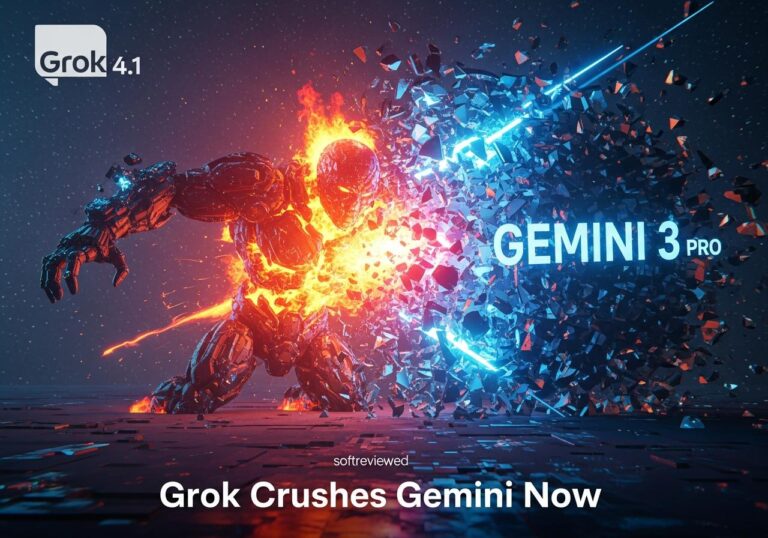Qwen3: Next-Generation Open Source AI
Discover how Alibaba’s Qwen3 is revolutionizing open-source AI with advanced capabilities and flexible deployment options
100% Open Source
Fully open-sourced under Apache 2.0, empowering global developers and enterprises to customize and deploy AI solutions without restrictions. This commitment to openness enables unprecedented innovation across industries.
Hybrid Reasoning Architecture
Seamlessly switches between thinking mode (complex tasks) and non-thinking mode (fast queries), optimizing balance between latency and accuracy. This dual-mode approach ensures both speed and precision where needed.
Broad Model Variants
Eight models ranging from 600M parameters (edge-ready) to 235B MoE, supporting diverse applications from mobile devices to autonomous systems. This scalability ensures appropriate solutions for any computational environment.
State-of-the-Art Performance
Qwen3-235B-A22B outperforms leaders like Gemini 2.5-Pro and DeepSeek R1 on coding, math, and reasoning benchmarks. These breakthrough results demonstrate Qwen3’s position at the forefront of AI capability.
Global Compliance & Accessibility
Supports 119 languages, enabling multilingual AI deployments across industries. This extensive language coverage ensures global accessibility and compliance with diverse regional requirements.
Cost-Effective MoE Design
235B MoE model reduces computational costs compared to standard large models, enhancing enterprise adoption. This efficient architecture delivers superior performance while minimizing hardware requirements and operational expenses.
Alibaba’s New Qwen3 AI Crushes Benchmarks: Is This the New King of Open-Source?
Just when you think you’ve caught up with the latest AI breakthrough, another one drops that resets the entire playing field. In a move that felt both sudden and significant, Alibaba’s AI team released a groundbreaking open-source language model. This new contender, Qwen3-235B-A22B-Instruct-2507, might have a name that sounds more like a Wi-Fi password, but its performance is anything but random. It’s not just an update; it’s a statement.
This new Qwen3 model is already posting benchmark scores that challenge, and in many cases surpass, some of the most powerful models out there, including the recently hyped Kimi K2 and even proprietary giants like Claude 4 Opus. We’re going to break down what makes this model so special, how it achieves its impressive results, and what this means for the ever-escalating race for AI supremacy. As we delve into the intricacies of the Qwen3 model, it’s essential to also consider competitors like Kimi K2. A comprehensive kimi k2 overview and features will shed light on why these models are pushing the boundaries of performance and setting new standards in the AI landscape. With innovations in architecture and training methodologies, the race for AI supremacy is heating up, prompting developers to rethink strategies and capabilities.
A New Titan Emerges with a Rather… Unique Name
First, let’s address the elephant in the room: the name. Qwen3-235B-A22B-Instruct-2507 is a mouthful, but each part tells a story. “235B” points to its massive 235 billion total parameters, while “22B” refers to the 22 billion parameters that are active at any given time, a hallmark of its efficient architecture.
This model is a serious leap forward from its predecessor. What’s truly turning heads is how it systematically outperforms not just its older versions but also other top-tier open-source models. The AI community is buzzing, and for good reason. This isn’t just another model—it’s a new benchmark for what open-source AI can achieve.
From Hybrid Thinking to a Two-Model Powerhouse
One of the most significant changes in this release is a strategic pivot in its core design. Previously, Alibaba’s models used a “hybrid thinking mode,” attempting to blend different reasoning processes within a single framework. With the new Qwen3, they’ve opted for a more specialized, dual-model approach.
After consulting with the community, the Alibaba Qwen team decided to train two distinct types of models separately to maximize quality and performance for specific use cases.
👉 The “Instruct” Model: Your Conversational Specialist
This is the model that has been released, specifically the Qwen3-235B-A22B-Instruct-2507. It’s fine-tuned to excel at following instructions, carrying on coherent dialogues, and handling general-purpose tasks. Think of it as the highly skilled, versatile conversationalist that can tackle a wide array of prompts with precision.
👉 The “Thinking” Model: The Deep Reasoner on the Horizon
While the “Instruct” model is already making waves, Alibaba has also announced that a dedicated “Thinking” model is on the way. This version will be designed specifically for deep logical reasoning and complex planning. By separating these functions, the team aims to create two best-in-class models rather than one jack-of-all-trades. This move signals a focus on purpose-built excellence, which could become a new trend in AI development.
The Numbers Don’t Lie: Qwen3’s Benchmark Beatdown

Talk is cheap, but benchmark scores tell a story of raw capability. And Qwen3’s story is a blockbuster. The new “Instruct” model is showing exceptional performance across a wide range of academic and industry-standard tests, establishing itself as a top-performing open-source Large Language Model (LLM).
It delivers significant improvements in:
- 📌 General Capabilities: Excelling at instruction following, logical reasoning, and text comprehension.
- 📌 Knowledge Coverage: Demonstrating a deep understanding of long-tail knowledge across multiple languages.
- 📌 User Alignment: Providing more helpful, higher-quality responses in subjective and open-ended tasks.
- 📌 Context Understanding: Boasting an impressive 256K long-context window for handling large documents and complex conversations.
A Head-to-Head Battle with the Best
When placed against its rivals, Qwen3 doesn’t just hold its own; it often comes out on top. Let’s look at how it stacks up against some of the most formidable models available today.
| Benchmark | Qwen3-Instruct-2507 (New) | Kimi K2 | Qwen3-Non-thinking (Old) | Claude 4 Opus |
|---|---|---|---|---|
| MMLU-Pro (Knowledge) | 83.0% | 81.1% | 75.2% | 86.6% |
| GPQA (Reasoning) | 77.5% | 75.1% | 62.9% | 74.9% |
| AIME25 (Reasoning) | 70.3% | 49.5% | 24.7% | 33.9% |
| ZebraLogic (Reasoning) | 95.0% | 89.0% | 37.7% | N/A |
| LiveCodeBench v6 (Coding) | 51.8% | 48.9% | 32.9% | 44.6% |
| Arena-Hard-v2 (Alignment) | 79.2% | 66.1% | 53.0% | 51.5% |
As the table shows, the new Qwen3 model achieves state-of-the-art results in several key areas. Its score of 70.3% on AIME25, a tough reasoning benchmark, is particularly impressive, soaring past both Kimi K2 and Claude 4 Opus. It also dominates in ZebraLogic and Arena-Hard-v2, highlighting its superior reasoning and alignment with user preferences. While Claude 4 Opus still leads in general knowledge (MMLU-Pro), Qwen3’s overall performance profile makes it arguably the most well-rounded open-source model available today.
So, What’s Under the Hood of this New AI Giant?
The power of Qwen3 comes from its Mixture-of-Experts (MoE) architecture. Instead of using one giant neural network for every task, an MoE model is like having a team of specialized AIs. When a prompt comes in, the system routes it to the most suitable “experts” to handle the job.
This approach has two main benefits:
- ✅ Efficiency: Only a fraction of the model’s total parameters (22B out of 235B) are used for any given task, which saves immense computational power.
- ✅ Performance: By training specialized experts, the model can achieve higher accuracy and capability on a wider range of tasks, from coding to creative writing.
This combination of massive scale and intelligent architecture is what allows Qwen3 to punch well above its weight, delivering performance that rivals even much larger, denser models.
The Broader Ripple Effect in the AI Pond
Alibaba’s release of Qwen3 is more than just a technical achievement; it’s a strategic move that sends ripples across the entire AI industry. By open-sourcing a model this powerful, Alibaba is not only democratizing access to top-tier AI but also applying immense pressure on closed-source competitors like OpenAI and Anthropic.
Developers, researchers, and startups now have free access to a tool that can compete at the highest level. This could accelerate innovation, lower the barrier to entry for building AI-powered applications, and challenge the dominance of the “pay-to-play” model that has defined the most powerful AI systems until now.
Furthermore, with its strong multilingual capabilities and impressive coding and reasoning skills, Qwen3 is a versatile foundation for a new generation of AI tools and services. You can already access the model through the official Qwen Chat interface, on Hugging Face, or via platforms like OpenRouter.
Charting the Course: Where Does Qwen3 Go From Here?
The release of the “Instruct” model is just the beginning. The AI community is eagerly awaiting the “Thinking” variant, which promises to push the boundaries of logical reasoning even further. If its performance is as big a leap as the “Instruct” model was, we could be looking at an open-source AI capable of solving incredibly complex problems.
This continued progress from the open-source community is forcing a conversation about the future of AI development. Will proprietary models maintain their edge, or will the collaborative, transparent nature of open-source ultimately win out? The answer is still unfolding, but releases like Qwen3 make a powerful case for the latter.
The Final Byte: A New Standard Has Been Set
Alibaba’s Qwen3-235B-A22B-Instruct-2507 has firmly established itself as a new leader in the open-source AI world. Its unique dual-model strategy, powerful MoE architecture, and chart-topping benchmark scores represent a significant milestone. It proves that open-source AI is not just catching up to its closed-source counterparts but is now competing head-to-head with them on performance.
For anyone interested in artificial intelligence, this is an exciting moment. A new, immensely powerful tool is now freely available to everyone, and its impact is only just beginning to be felt. The bar has been raised, and the race to build the future of AI is more open and competitive than ever before.







